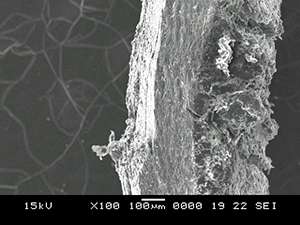Nail clippings as a biomarker: Simple, but requiring greater attention

In theory, the presence of certain chemicals such as mercury can be established by examining nail clippings. Although this is already being done in practice, the method requires greater care than was hitherto thought. That is the conclusion drawn by Paolo Favaro, who will be defending his doctoral dissertation on this subject at TU Delft.
Nail clippings can be used as a 'biomarker', i.e. they can be used to detect the presence of certain substances in the body (e.g. mercury, selenium or arsenic). This information can then be used to identify exposure to possible contaminants in the environment or to follow the course of diseases in the metabolism of the person being examined.
Isotopes
The analysis of nail clippings is a relatively easy method that also involves little inconvenience for the people being examined. Small samples of nail pieces are viewed through neutron activation analysis (NAA). The pieces are bombarded with neutrons, resulting in the formation of (harmless) radioactive isotopes. These isotopes quickly decay into stable, non-radioactive isotopes. The decay allows conclusions to be drawn concerning the presence of certain substances and how much of a particular substance is contained in the nail fragment.
Contamination
This all sounds good. However, as Paulo Favaro has shown in his PhD research, this method involves a number of complexities. Favaro examined the reliability of the technique in detail. The problem does not lie in the neutron activation analysis, but in the effects of possible contamination of the nail cutting. For example, the nail can become contaminated by dirt or through the use of nail polish. Such contamination can be up to a thousand times greater than the amount of the substance originally present in the nail.
Cleaning methods
Before the analysis, the piece of nail must therefore be cleaned very thoroughly. After investigating various cleaning and preparation methods, Favaro concludes that, surprisingly, there is no single best method for cleaning nail clippings. It seems different substances require different methods. The method of cleaning and preparation thus has an influence on the final result. The amount of water in the sample also has a major effect on the measurement result, and the water content is highly dependent upon the sample preparation.
Favaro therefore advises paying greater attention to the sample-preparation procedures used for nail analysis, in order to prevent false conclusions from being drawn from the measurement results. He would ideally like to see a separate and well-defined measurement procedure developed for each substance being studied.




















